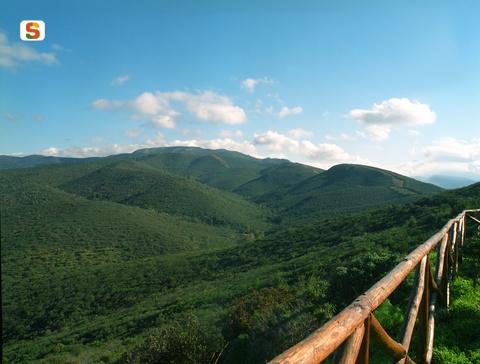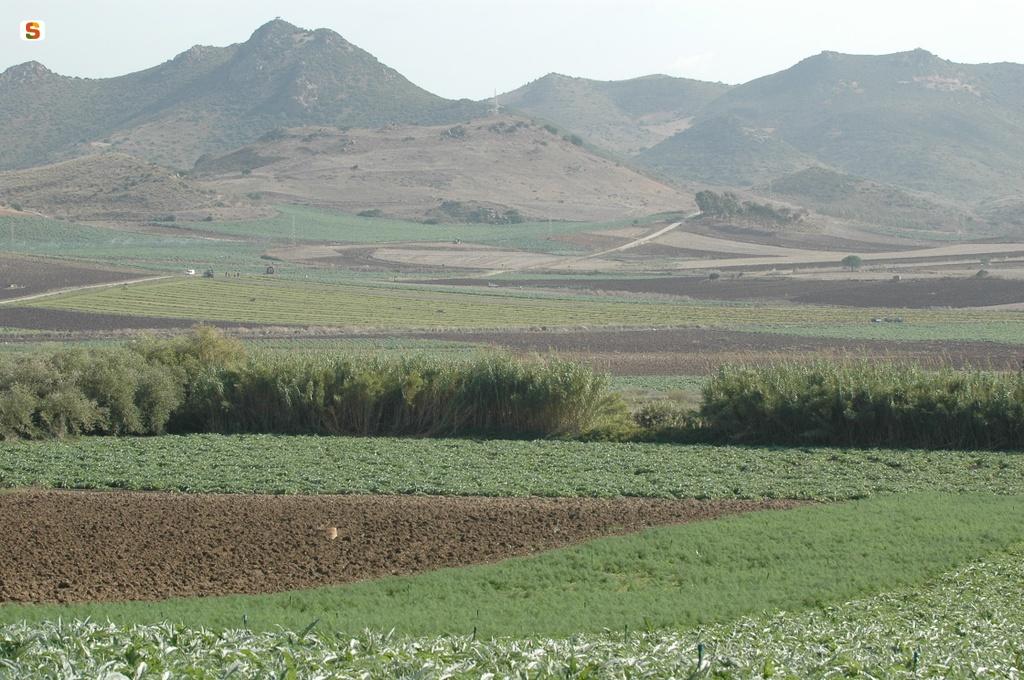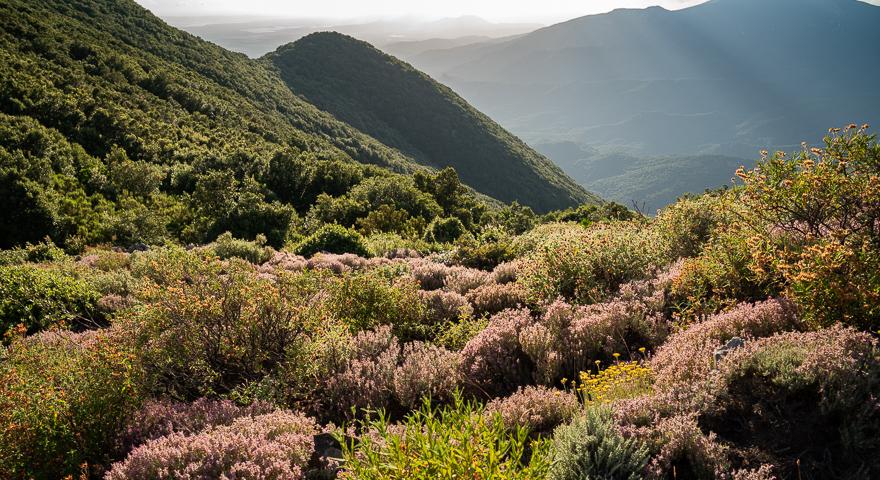Sulcis is a sub-region of Sardinia, in thesouth-west of the island, and forms an integral part ofthe historical and geographical region of Sulcis-Iglesiente. It takes its name from the ancient Punic city of Sulki or Sulci(the present-day Sant'Antioco). Sulcis propercorresponds to the south-western slope of the Sulcis Mountainsand to the plain below as far as the south-west coast thatoverlooks the Channel of Sardinia from Cape Altano tothe Gulf of Palmas and from here towards Cape Teulada.Due to political-geographical affinities,the Sulcis archipelago is considered part of the sulcitan territory, with the islands ofSan Pietro and Sant'Antioco.Sulcis has a unique characteras it is almost completely bounded by the sea andby the mountain massif of the same name, which isolate it from the restof the region. The border is physically demarcated by a watershedof medium altitude and rugged morphology, which divides Sulcisand Iglesiente and is interrupted by a narrow strip of alluvialdeposits that links Carbonia to Villamassargia.In the west, the morphology is characterised byfloodplains stretching all along the coastal strip,from Porto Pino (Sant'Anna Arresi) to Carbonia and Portoscuso, alternating with gentle hilly reliefs. To the north and east, the morphology is defined by reliefs that transform the landscape abruptly from flat-to-hilly to inaccessible and mountainous (source: Wikipedia).
Il Sulcis (Maurreddìa in sardo) è un territorio che si estende nella porzione sud-occidentale dell'Isola, parte integrante della regione storico-geografica del Sulcis-Iglesiente. Prende il nome dall'antica città punica di Sulki o Sulci (oggi Sant'Antioco). La delimitazione del Sulcis non è ben definita in quanto si tende talvolta ad estenderla in senso lato comprendendo anche parte del territorio dell'Iglesiente oppure anche i territori di Pula, Villa San Pietro e Sarroch, la cui collocazione geografica è incerta e controversa: il Sulcis propriamente detto corrisponde al versante sud-occidentale dei Monti del Sulcis e alla piana sottostante fino alla costa sudoccidentale che si affaccia sul Canale di Sardegna, da capo Altano, o capo Giordano, fino al Golfo di Palmas e da qui continua verso il Capo Teulada. Per affinità politiche-geografiche è considerato parte del territorio sulcitano l'arcipelago del Sulcis, con le isole di San Pietro e di Sant'Antioco. Più incerta è la collocazione di Pula, Villa San Pietro e Sarroch, che fanno parte della Provincia di Cagliari e sono situati lungo la costa del Golfo degli Angeli, ai piedi del versante sud-orientale dei monti del Sulcis, nella parte esterna del territorio sulcitano. L'entroterra montano di questi comuni ha infatti un'affinità e un'omogeneità ambientale con il Sulcis, tuttavia i centri abitati giacciono su una piana costiera geograficamente isolata e distinta dal territorio sulcitano e che ha invece una naturale continuità con la piana di Capoterra, a tutti gli effetti considerata parte del Campidano di Cagliari.
Pur presentando caratteristiche ricorrenti in molte subregioni della Sardegna, il Sulcis mostra una sostanziale peculiarità quando si prendono in considerazione, nel complesso, la geografia, la geologia, il clima, la vegetazione: dal punto di vista geografico e geomorfologico, il Sulcis ha una forte caratterizzazione in quanto quasi completamente delimitato dal mare e dall'omonimo massiccio montuoso, che lo isolano dal resto della regione. L'unica via naturale di collegamento è dislocata nella parte orientale del confine settentrionale: il confine è definito fisicamente da uno spartiacque di media altitudine, ma dalla morfologia aspra, che separa il Sulcis dall'Iglesiente ed è interrotto da una stretta fascia di depositi alluvionali che collega il territorio di Carbonia a quello di Villamassargia. Ad ovest, la morfologia del territorio è caratterizzata da piane alluvionali che si estendono lungo tutta la fascia costiera, da Porto Pino (Sant'Anna Arresi) fino a Carbonia e Portoscuso, e si alternano a dolci rilievi collinari. Questo sistema di pianure costiere si inoltra a est, nei territori di Tratalias, Giba e Santadi, e a nordest, nei territori di Perdaxius e Narcao, alternandosi con rilievi collinari di bassa o media altitudine, più o meno impervi, e con i depositi alluvionali della formazione del Cixerri. A nord e a est, la morfologia è definita dai rilievi che trasformano bruscamente il paesaggio da pianeggiante-collinare a impervio e montuoso (fonte: Wikipedia).
DA SEGNALARE
Soprattutto per la ricchezza di sentieri per la bellezza del territorio forestale e montano, il Complesso Forestale di Pantaleo: 8.050 ettari di superficie, è costituito quattro unità gestionali, tra cui tre foreste demaniali di Pantaleo (Santadi), Tamara Tiriccu (Nuxis) e Rosas – Monte Ettoi - Monte Orri (Narcao).






